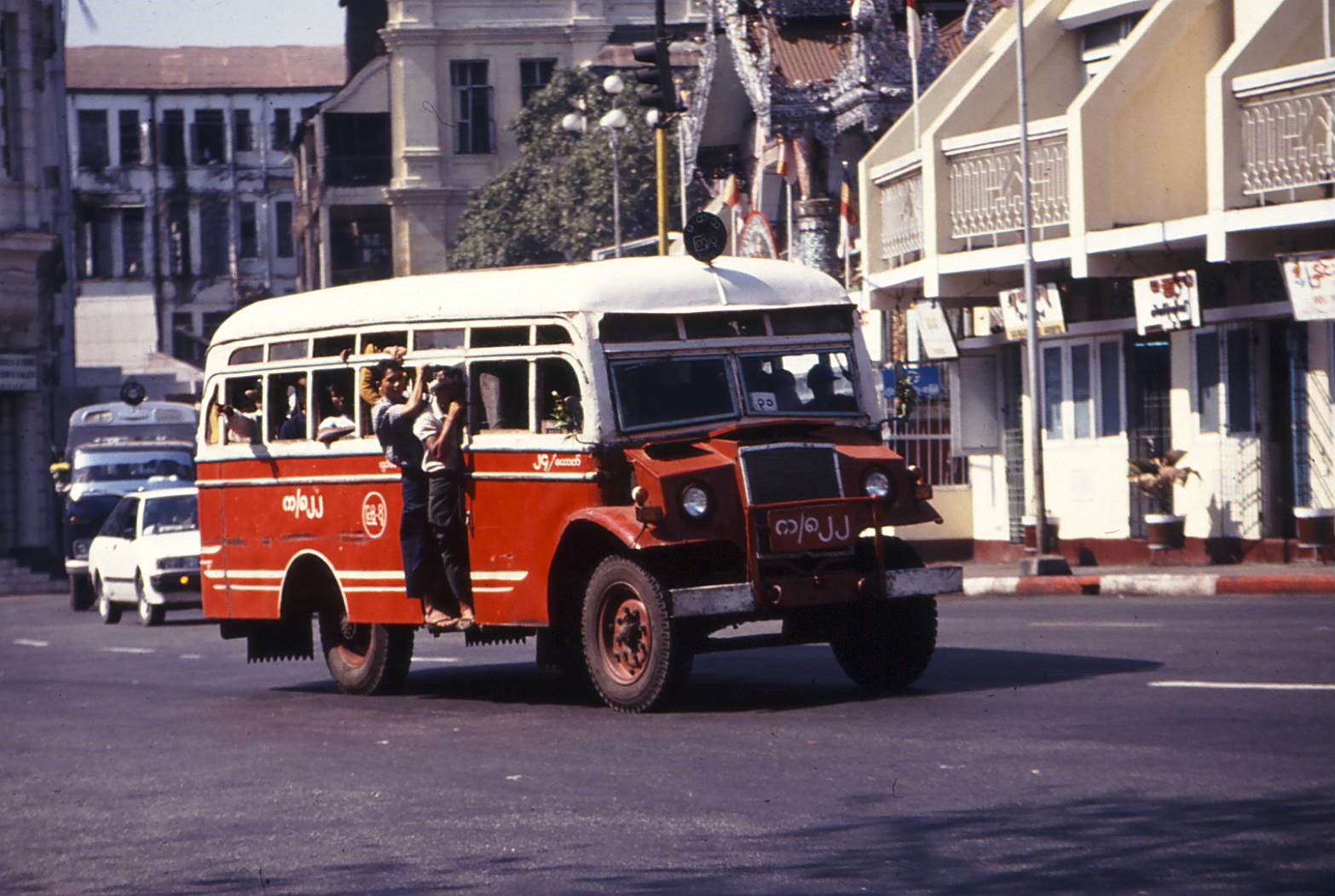Column Myanmar
On Current State of Myanmar Short Films2
In 2011, Wathann Film Festival was held in Myanmar. The festival showcased short films and short documentaries, all under 30 minutes, to the general public in Yangon. Since Myanmar cinemas don’t show short films and Myanmar TV channels won’t play any independent short films, Wahtann Film Festival became the main outlet from which filmmakers can show their work to the audience. Even today, we have two main film festivals in Myanmar including Wathann. Another local festival – Human Rights Human Dignity International Film Festival – is now in its fourth year and as the name suggests, it focus mainly on films that explore human rights issues.
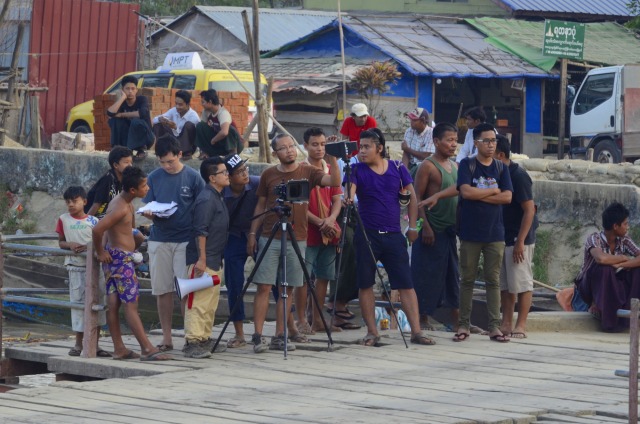
There are two ways in which these short films and documentaries are being made in Myanmar. First is through the filmmaking workshops. Students go through a period of training at the workshop and at the end, they make documentaries or short films to complete the training. Second is through personal financing. Usually the director and/or producer put up a budget for the project and the crew – cinematographer, sound recordist, editor etc – chip in with their expertise to make a film. In both cases, the filmmakers and the crew involved in the film make little or no profit. Their main objective is to complete a story that they can show to the audience at local and international film festivals. Some filmmakers have aspirations to one day make feature-length films that can reach more audience and view the process of making short films as a training exercise. Others take making short films as an end in itself.
One of the main advantages of making short films that won’t be played at local cinemas for profit is that it doesn’t have to go through the same stringent censorship board that all of the feature films have to go through. For feature films, the encounter with the censorship board begins at the stage of script. A feature film can be made only if the censorship board approves the script. For short films, we can skip this step, make the film and only show it to the censorship board only when it is ready for screening at local festivals. This means that young filmmakers can explore wider variation of stories and subjects. Even if the film is not approved by the censorship board, we can still screen these films at international film festivals.
Because many of the young filmmakers had an education in making documentary films, many of their fiction films also have a documentary aesthetics – from the choice of story to the look of the film. For instance, “Missing” and “To School”, two Myanmar short films screened at this year’s Short Shorts Film Festival have social justice themes. Missing tells the story of a political prisoner and his family; To School highlights the poverty of the rural life in Myanmar. Both of these films came out of a filmmaking workshop and both used non-professional actors. The quality of these films are not up to the international standard but they are so much better than most of the mainstream Myanmar movies that are being played at local cinemas.
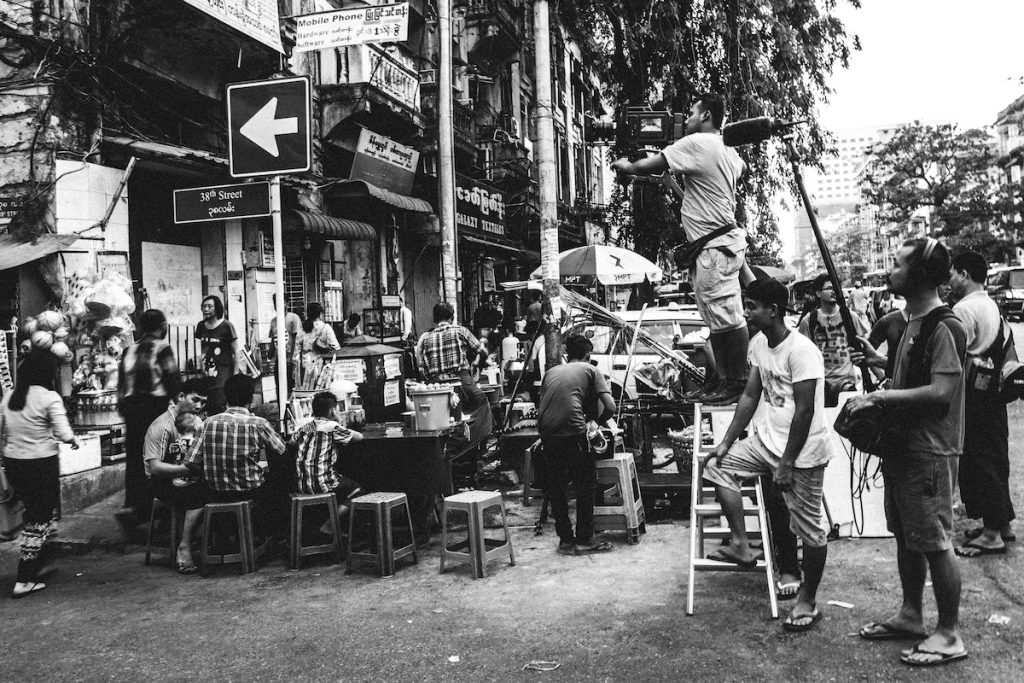
There is a big room for improvement in Myanmar short films. And of course there are many ways to support and help improve them. One is to continue the current local film festivals every year so that the filmmakers will have an outlet to display their work. Another is to collaborate with other countries in training and developing young filmmaking talents and to initiate co-production projects that will allow the exchange of filmmaking knowledge. This will also widen the audience of Myanmar short films both locally and internationally.
Short films may not have a long history in Myanmar cinemas and there may be a need for more film education and support for short films to be made, but Myanmar is currently going through a very exciting period in terms of the interest and the energy of the young filmmakers to tell stories through short films. One of my best friends, filmmaker Sai Kong Kham, describes this desire to make short films best: “We are making films that we, ourselves, want to watch at cinemas.” To make short films in Myanmar means both a political and artistic statement because of the country’s political history and the current state of the film industry.
On Current State of Myanmar Short Films
Making short films as an artistic endeavour is relatively new in Myanmar. Despite a rich history of film since the 1950s, we have almost no history to speak of when it comes to short films. It is mainly the younger generation of filmmakers, in their 20s and 30s, who have recently started exploring short films as a medium for artistic expression. Two factors play a crucial role in this new found enthusiasm for short films among young filmmakers: a change in the political situation of the country that allows for more freedom in filmmaking and a deep dissatisfaction with the current quality of mainstream Myanmar films.
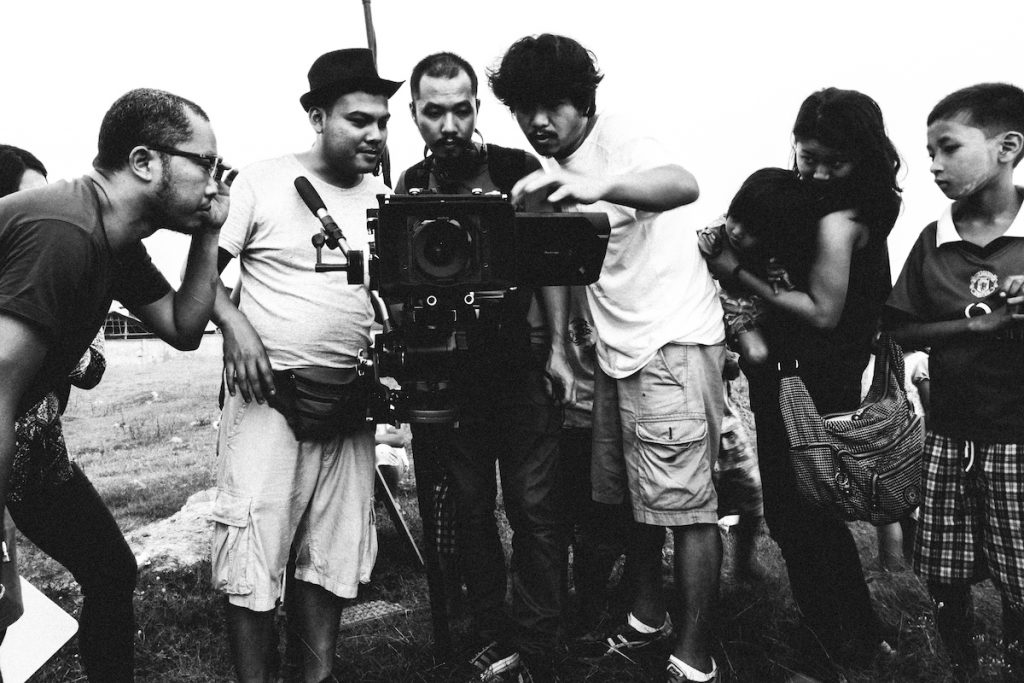
We must briefly look back at the role politics has played in the film industry to explore the first factor. The 1950s was considered the golden age of film in Myanmar. There were many stand-alone cinemas all across the country and there were filmmakers delving into all kinds of movie genres to showcase their work at these cinemas. Watching movies was a popular pastime for the public. This thriving film culture turned a dark corner when the military seized the power in 1962. The government confiscated many of these cinemas and imposed a strong censorship on all the films. This was the beginning of five decade long decline of Myanmar films. This leads us into the second factor: the quality of current mainstream Myanmar films.
If you were to step into a cinema to watch a Myanmar film, you will get to experience movies that closely resemble cheap soap operas constructed with weak storylines, predictable plots and forgettable characters, shot by cinematography that lacks creativity, and brought to life by overly dramatic acting. Censorship that limits the scope of the script is one of the reasons for these poor quality films but the blame also lies with the mainstream film industry. Over the decades, the producers and directors have become complacent in their position as the central players in the mainstream film industry. They look to make movies quickly, with little thoughts and creativity, to gain profit. For younger generation of film lovers from Myanmar, Hollywood and international films are the only source of entertainment that is worth their time and money.
In 2011, Myanmar government started on the path to democracy. The tight iron grip on the press and the media was loosen for the first time in five decades. And international media poured in to cover the historical events that were taking place in Myanmar. Suddenly, a country that used to be a police state became more friendly towards photo and video cameras in the street. This was the turning point when the new generation of filmmakers grabbed on to the idea that film can be a form of political and artistic expression.
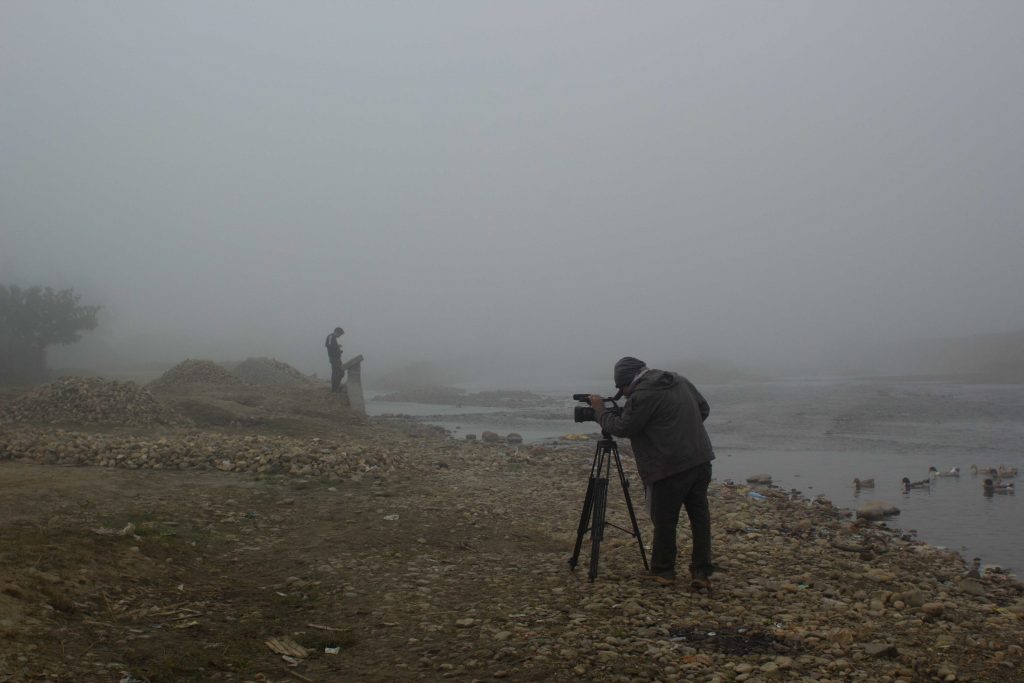
There are no formal education system in place for these new filmmakers to learn their trade. Many have worked with foreign video journalists as fixers and translators. They learned storytelling and videography through their contact with these international journalists. Others attended filmmaking workshops, mostly funded by foreign embassies and NGOs. These workshops mainly focused on documentary filmmaking — telling real life stories with a strong human rights and social justice core. Considering the dark history of the country’s military rule, there are no shortage of stories to tell through documentaries. This initial interest in making documentaries will later spread to the area of making fictional short films.
“Myanmar” Until Recently, Myanmar Was Not Travel-Friendly
Column by Fumio Nagashima
Until Recently, Myanmar Was Not Travel-Friendly
Now before, just acquiring a travel visa was difficult in itself. A little while back, I was required to attach my travel itinerary to my application. Of course once inside the country, it wasn’t problematic to change my schedule. On top of that, when I was filling out the work section of my application with “XX Publishing,” I had to provide additional documents making the whole process a pain to deal with. Depending on the situation, sometimes a visa wouldn’t even be given. The government at the time just didn’t like the media entering the country. Even if, for instance, the publishing company was only a children’s fairy tale publisher, it would still be considered as mass communications. Suspected as a member of the media, I had to sign a contract that stated I would not write any information or anything about the inner workings of Myanmar after returning to my home country. When 2016 rolled around, the visa procedure had been greatly simplified. This may be thanks to democratization.
During the rule of the military junta, foreigners could not travel freely throughout the country. Even now, there are still certain areas that remain restricted. One time, while I happened to be in Myanmar, there was some big news. Foreigners were now permitted to travel to cities further north of Mandalay in the northern region. What’s more, you could ride the sleeper train to get there. Foreigners being able to ride a sleeper train to the northern cities was truly quite the news. I didn’t have much time to spare, but I managed to make some in order to take advantage of this opportunity.
I wasn’t sure of which city to go to, but I picked Myitkyina. This is home to the Kachin, a tribe said to have previously been headhunters before. Many Kachin are now Christians, by the way.
I hired a driver I met in Mandalay who spoke English to act as my interpreter and decided to ride the sleeper train from Mandalay to Myitkyina. First of all, I went to the station to confirm if foreigners could really ride the train. A feeling of relief washed over me when I bought the ticket without any problems. The tickets to ride the railway are more expensive for foreigners than for locals, but for some reason I was given the local price. Not wanting any trouble once on board, I told the attendant at the ticket window I was Japanese, yet they still charged me as a local. Being that it was right after the announcement allowing foreigners to ride, perhaps the price for foreigners hadn’t been established yet. The attendant also mentioned it would take about 24 hours to get to Myitkyina, but there was no guarantee of how long it would take till it arrived. What a thrill the railway is.
I had bought a ticket for the sleeper car for high-class passengers. It was a private compartment for two passengers. The seats were riddled with holes. Before departing, the conductor came by to check the tickets. He spoke a little English and in discovering that I was a foreigner, he left me with the words, “Never give up.” In other words, he was saying, “Good luck riding to Myitkyina.” I understood why once we were on our way.
The train departed fairly on time. Before leaving, I bought a candle as suggested by my interpreter. Why? Because the lights inside the car ran on private power generation, which means that the lights only came on while the train was moving. Even when it was running, the lights were rather dim. It goes without saying that there was no air conditioner either. There was also a warning from the conductor: keep the windows closed while you sleep. The train chugged along so slowly that if the windows were wide open, thieves could sneak inside. I’m unsure if this train is still in commission now, but it was quite fascinating.
Without any accidents or obstacles, the train rolled along pretty well. However, I didn’t know exactly where the train was rolling to. The stops on the way had signs showing which station we were at, but it was all written in Burmese so I couldn’t read it. There was no dining car either. Whenever we stopped at a station, there were people selling food along the windows, so I bought food from them. Most of the food were things I had never seen before. But this was, at any rate, an area of minorities. Finally, the train safely arrived at Myitkyina. Although it was estimated to take 24 hours, it was closer to 36 hours. Not wanting to gamble on when I would make it back by train, I decided to fly back instead.
■Myanmar and the Movies
As one would expect, there are theaters in Myanmar. Although I’ve never been to a Myanmar theater myself, it seems that Myanmar films and foreign films from countries like India (there’s a large Indian population in Myanmar) and the U.S. are shown. I’d love to see a film in Myanmar if I have the opportunity.
There was a film that was also released in Japan called “The Lady” about half of the life of Aung San Suu Kyi, the leader of Myanmar’s democratic movement. The filming did not take place in Myanmar, but it beautifully paints the image of the woman of the hour, Aung San Suu Kyi. Though I’m not sure for how long, she stayed in Japan for a bit and also it seems she can speak Japanese.
“The Lady”
A Country of Buddhist Believers
Column by Fumio Nagashima
At present, the world is watching Myanmar’s move towards democratization. Its official name is the Republic of the Union Myanmar. Before, it was called the Socialist Republic of the Union of Burma. It’s the same Burma that Michio Takeyama wrote about in Harp of Burma. People of a certain age are probably familiar with this name.
Myanmar is a nation of several fairly unknown minority groups. The number of groups amounts to over 130 altogether. Many minority tribes especially live near the country’s border. In a sense, the sheer number of minorities is one of the country’s greatest problems. I won’t go into detail here, but it was World War II that complicated this problem of race.
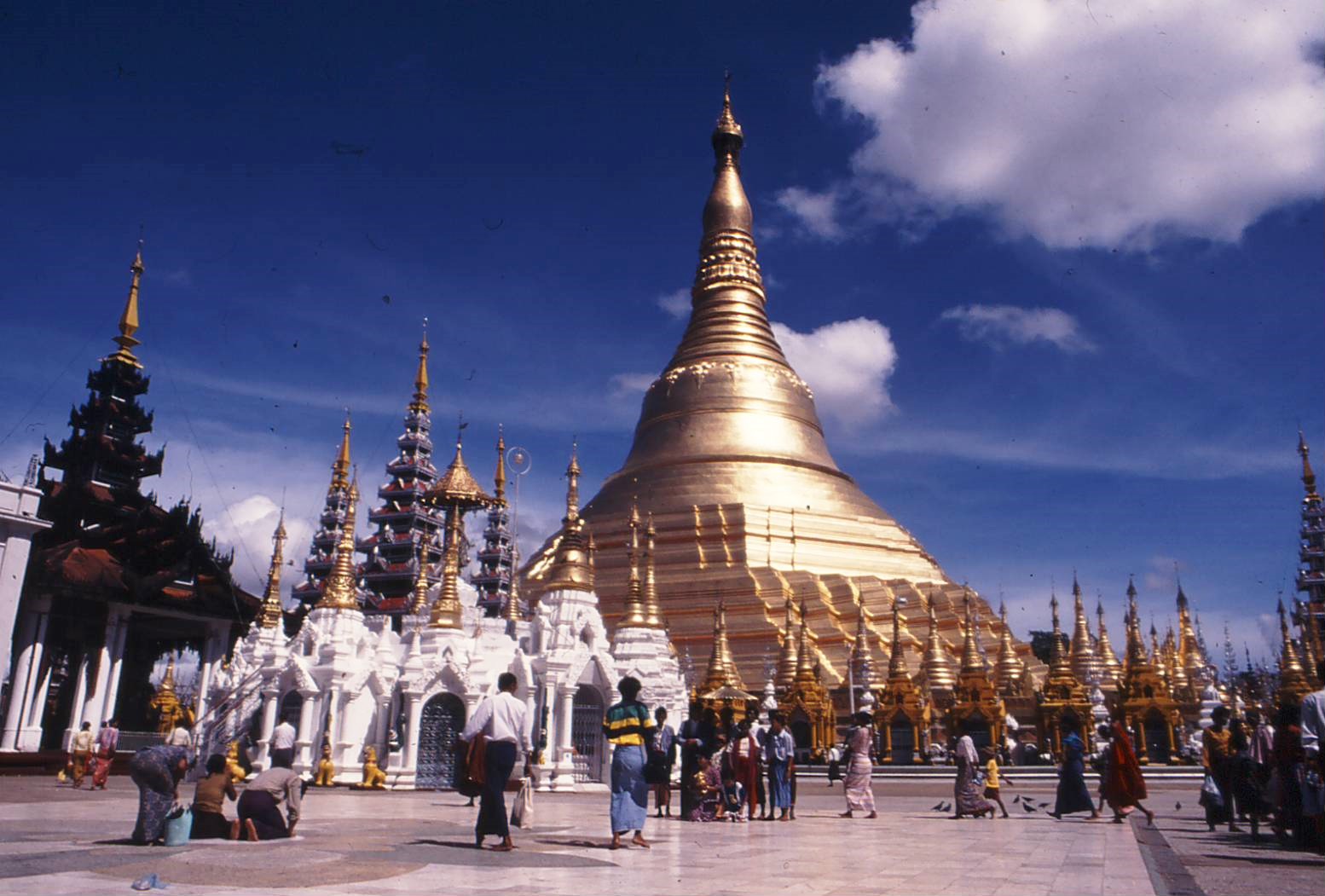 Despite its ethnic melting pot, Myanmar is a Buddhist country. The percentage of Buddhist followers is over 90%. When I say Buddhism, I’m referring to Theravada (Hinayana) Buddhism. Japan is also a Buddhist country, but follows Mahayana Buddhism, so it’s not quite the same.
Despite its ethnic melting pot, Myanmar is a Buddhist country. The percentage of Buddhist followers is over 90%. When I say Buddhism, I’m referring to Theravada (Hinayana) Buddhism. Japan is also a Buddhist country, but follows Mahayana Buddhism, so it’s not quite the same.
Thailand, the country next door that’s also popular among Japanese tourists, practices Theravada Buddhism as well. But this is not to say that Myanmar and Thailand practice in the same way. The biggest difference I felt from a tourist’s standpoint was at a temple. In Thailand, you take off your shoes before entering the temple’s main hall. But in Myanmar, you typically have to remove your shoes before even entering the temple’s premises. In other words, to pass through the temple gates and worship at the main hall or a pagoda, you must first walk the ground’s surface barefoot.
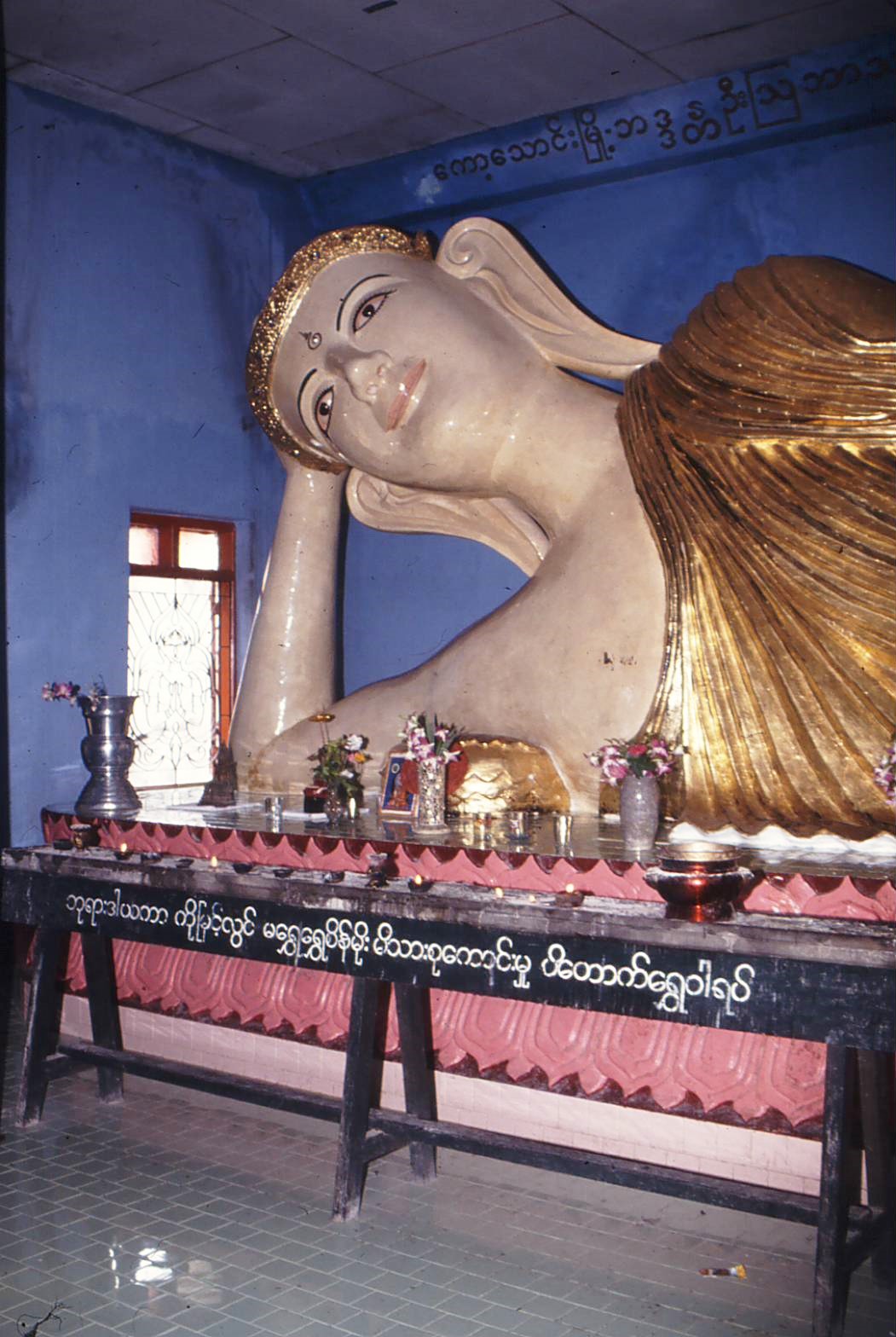
In addition, inside the main halls in Thailand, there’s a statue of Buddha that can be touched in order to stick gold leaves on it, emulating Buddha. In Myanmar, however, most places forbid women from touching the statues. Women are also not allowed to come within a certain distance of the Buddha statues.
A Safe Myanmar
If I tell my friends I’m going to Myanmar, the general reaction is, “Are you sure it’s safe to go there?” Until the recent democratic election, Myanmar was ruled by a military junta. When people hear the words “military junta,” they automatically associate it with “dangerous.” But if you actually travel there, you’ll realize how safe it actually is. It may be the safest country in Southeast Asia. This might be only my personal opinion, but I think it’s even safer than Japan. I believe it’s because the military junta’s complete control ensured safety. But this only applies to the heart of the city, and doesn’t speak for the issues in areas with heavy minority populations. What’s interesting was that before, soldiers guarding government buildings in the previous capital Yangon (today, the capital city is Naypyidaw) would carry around old, out-of-date guns. But cities on the outskirts were guarded by kids who were not even 20 years old holding automatic rifles that looked like M-16s. The capital had rusty, old pistols and the outskirts had military-grade rifles. This, in a way, is very telling of the country’s current atmosphere.